Posted by Angela Ferreira on October 18th, 2009
It wasn’t until mid Renaissance times that anyone other than the church was wealthy enough to afford decorative commissioned paintings. People wanted to show their wealth by asking painters and sculptors to do this.
Roman Art was almost as wallpaper, it covered most of the interior walls, outdoors murals, shop walls and ceilings.
Art form then, was a service to others, a technical skill brought into your establishment with limited individual freedom. Nevertheless, many artists while working for the church and patrons would also benefit from food and bedding as guests while executing their assignments.
In contemporary times, artists are given an assignment and we often pre-negotiate payment, theme, color scheme, size, etc…
Has the artist possess limited freedom in their work? What are the personal benefits besides the payment that an artist accomplishes from a commission that moves away from the individual style?
The challenge is that an artist has to re-think their work outside their ‘safe-comfort zone’ and create pieces that satisfy the commissioner as much as themselves.
I personally found this a very enjoyable journey for a professional artist. These five paintings shown here are an allocated comission to Novotel Hotel in my local zone.
After given a brief, I have walked to my studio thinking, researched and re-invent some artform that would still fall in to the client’s expectation and of course carry on my style signature. A challenge that I have truly enjoyed with the added bonus of discovering a new facet to my developing art skills.
Is a traditional artist an ego seeker? What is an artist true goal when producing art, is it their own fulfillment, or is it the rewarding enjoyment of public/patrons approval?
-

-
Sunrise – Oil on painting paper
-
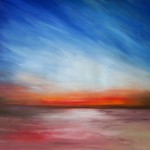
-
Sunset – Oil on painting paper
-
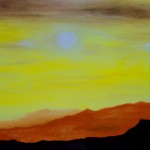
-
Sunshine – Oil on painting paper
-
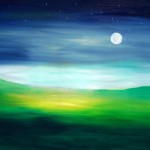
-
Moonrise – Oil on painting paper
-
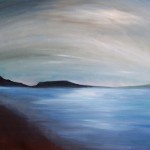
-
Misty – Oil on painting paper
Filed in being an artist,landscape,painting
- Comments closed
Posted by June Underwood on October 16th, 2009
The phrase, “Sloppy Craft”, the title of a recent panel discussion and a forthcoming exhibition at Portland’s Contemporary Crafts Museum, had to be checked out. Whatever could it mean? How could the Contemporary Crafts Museum have been drawn into featuring sloppiness? What kind of provocation was intended by the title? What are the implications of honoring such a concept as sloppy craft for art as well as craft? Tell me more, tell me more.
A bit of background: when I was working textiles, I regularly engaged in a “discussion” with quilters (some traditional, some contemporary) about whether the stitching work done on my textiles ( specifically in construction and quilting) should strive for perfection. I always maintained that my goal was “competence.” My attention was entirely on the image and impact (on, I maintained, the art). The craft was there only to hold it together and/or to add to the art. Hence my seams were not necessarily straight and the back of the art was decent but not flawless (I didn’t bury my threads, for example, simply tidied them). I used the quilting stitches as part of the design, which meant that they were generally not even in length and that they were heavy in places and light in others; this can make the quilted art hang wonkily, requiring heroic measures to make it perform well.
This is an example of a old piece of mine that I claim has “competent” craft:
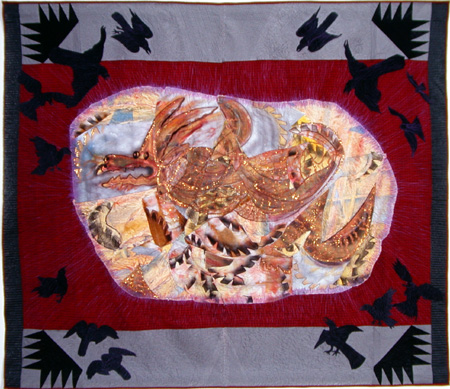 Sophie, Emerging, 84 x 73″, 2002, Materials: hand-painted cotton, canvas, silk, stretch-polyester, felt. Methods: hand- painted-and-dyed, airbrushed and commercial fabrics. Machine stitched.
Sophie, Emerging, 84 x 73″, 2002, Materials: hand-painted cotton, canvas, silk, stretch-polyester, felt. Methods: hand- painted-and-dyed, airbrushed and commercial fabrics. Machine stitched.
more… »
Filed in across the arts,art criticism,art education,art history,art world,artform,being an artist,conceptual,drawing,materials,motivational,painting,perception,Uncategorized,working
- Tags: Conceptions, craft
- Comments closed
Posted by Birgit Zipser on October 12th, 2009

Early morning walk in Greenwich Village.
Inspired by one of my heroes, Richard Estes. Reflections, reflections, reflections…
Filed in photography
- Comments closed
Posted by June Underwood on October 6th, 2009

Rackstraw Downes Mixed Use Field on Texas Coast, 1987, oil on canvas on board, 11 x 58 inches
As someone soon to be facing how to paint a large desert sky spread across a large desert panorama, I’m circling the question of the possibilities available.* The Goldwell Foundation, where I’ll be painting,locates itself physically near Beatty, Nevada, on the northwest region of the Basin and Range country, 8 miles and one mountain range from Death Valley. I’ve done lots of small studies there. Now I’m contemplating the Big One. Desultorily contemplating…..
I have no theories, only pictures.
more… »
Filed in across the arts,interpretations,landscape,painting,photography,resources,Uncategorized
- Tags: Critiqueing Art, desert, Oil painting, panorama, photography
- Comments closed
Posted by Birgit Zipser on September 28th, 2009
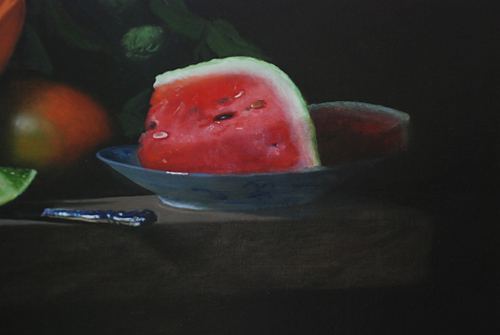
20 x 30 cm detail from ‘Longing for Pondicherry’, Linen on wood, 70 x100 cm, in progress
Hanneke van Oosterhout just emailed me a detail from her latest painting showing a watermelon resting in an earthenware bowl. When I first discovered Hanneke, she was painting roses. I am able to admire one of them because it graces my dining room. Hanneke’s painting shows a yellow rose standing in streaming water while stretching upwards, both lovely and powerfully, with one of its leaves fluttering downwards. more… »
Filed in art and economics,painting
- Comments closed
Posted by June Underwood on September 19th, 2009
On August 23 I finished the seven-panel plein air oils of The Diamond Grade. On September 10, I’m still working on putting together a small card with a fold-out version of the panorama. This is a project I thought to complete in a couple of hours. Instead, it’s taken weeks.
There was the question of the size of the images. And the paper onto which they would be printed. And which printer. And then it was clear that without some kind of cover, the images, folded into rectangles, looked a bit like the notes I passed to friends as a sixth-grader. So I had to find a cover. And then the images sprang open inside the cover, so I had to find a way to fasten the cover, a way which could be undone and redone, without too much damage. I had a bunch of Moo cards that I am currently enamored of that I wanted to include somehow.
Here’s the photo essay of the process:
The original strip of images:

After trying out samples of 3″ and 4″ sizes on my HP ink jet printer and 2″ sizes on my Epson pigment printer, which actually could handle up to 24-inch wide strips, I decided to go with Kinko’s laser printing service.
more… »
Filed in art world,being an artist,landscape,Uncategorized,working
- Tags: Card-making, Conceptions, Oil painting
- Comments closed
Posted by Birgit Zipser on September 15th, 2009
Noticing that prolonged standing at an easel and painting with the right hand results in a twisted torso, it seemed a good idea to spend time to learn sketching with the left hand to twist the torso in the opposite direction and thereby, hopefully, realign centrally.

Remembering that da Vinci is reported to have been ambidextrous, I looked him up on Wikipedia and noticed with disappointment that his Vitruvian Man shows two opposite twists. The belly button is displaced with respect to the sternum in one direction and the sternum and his nose are displaced in the opposite direction. more… »
Filed in being an artist
- Comments closed





 Sophie, Emerging, 84 x 73″, 2002, Materials: hand-painted cotton, canvas, silk, stretch-polyester, felt. Methods: hand- painted-and-dyed, airbrushed and commercial fabrics. Machine stitched.
Sophie, Emerging, 84 x 73″, 2002, Materials: hand-painted cotton, canvas, silk, stretch-polyester, felt. Methods: hand- painted-and-dyed, airbrushed and commercial fabrics. Machine stitched.



